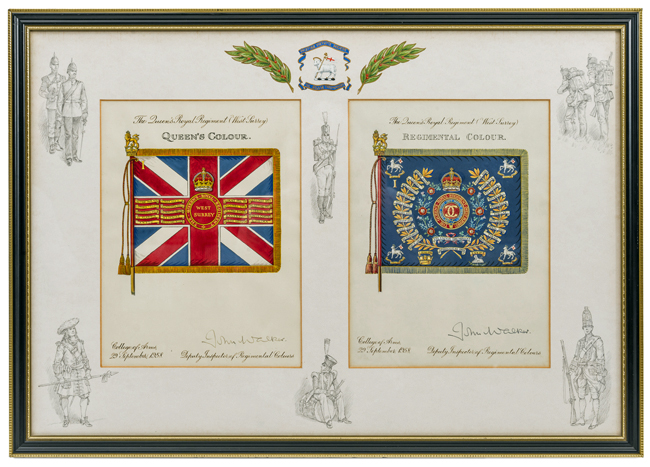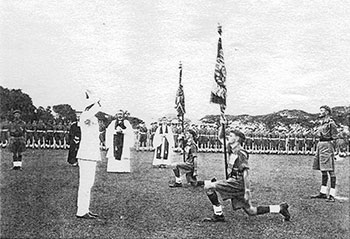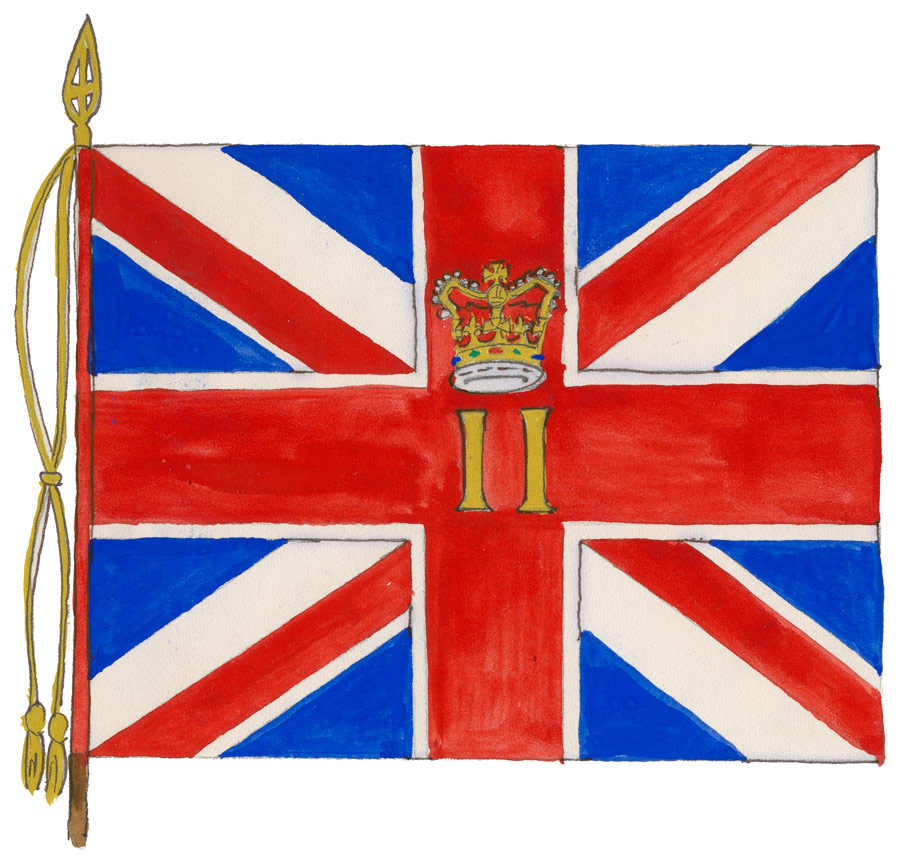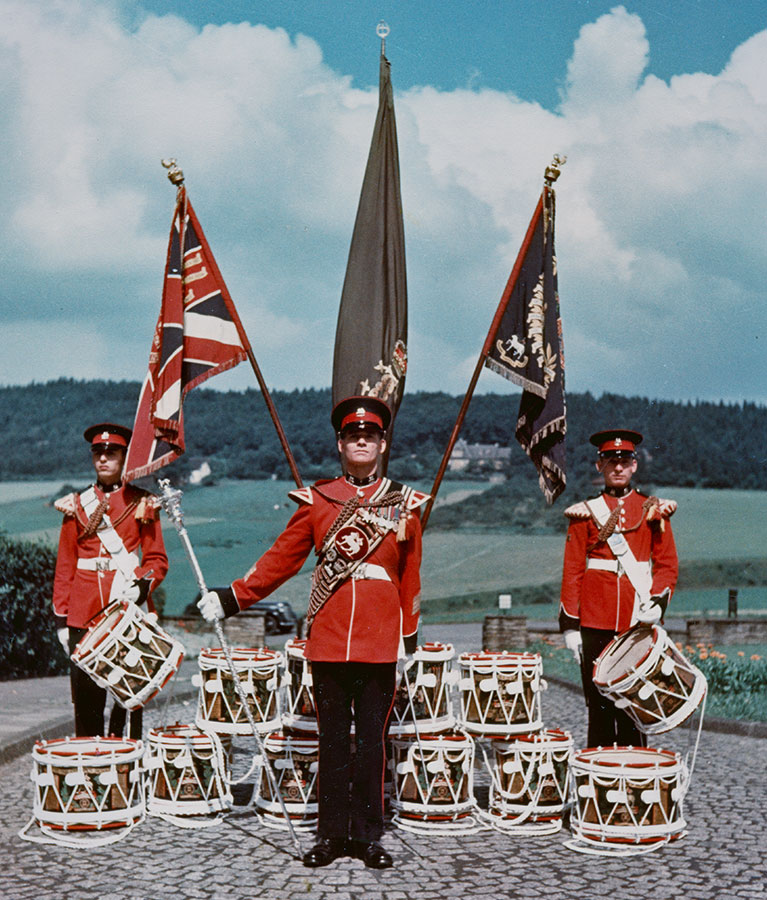The Colours of The Second or Queen’s Royal Regiment
The 1st Battalion 1947-1959
Kings Colour |
Regimental Colour |
| Figure 14 (Click to enlarge) |
Figure 15 (Click to enlarge) |
 |
| Figure 16 |
| 1st Bn The Queen's Royal (West Surrey) Regiment, Tientsin, China. |
The hundred year Colours of the 1st Battalion were trooped for the last time on 10th July 1947 at Singapore, after which the battalion received new Colours from the Hon PAB McKerron CMG. These Colours, which conformed with regulations dating from 1858 and 1881, were quite different from what had been seen in the battalion before. In 1858, the size of Colours had been reduced to four feet by three feet six inches, and in 1881 this size was again reduced to three feet nine inches wide and three feet deep.
The King’s Colour was, as ever, the Great Union. In the centre was a red roundel bearing the Regimental title surmounted by a King’s Crown. Something quite new was the Roman figure I in the first canton to denote the 1st Battalion: until now the regiment had always borne a Roman II to denote its number in the Line. On the horizontal arms of St George’s cross were placed the same ten Great War battle honours as had been carried on the old Colours. To these were added, by authority of Army Order 47 of 1957, a further ten battle honours for the Second World War:
The last Trooping of these Colours, 10th July 1947, Singapore


Figure 17 | Figure 18
VILLERS BOCAGE |
SALERNO |
TOBRUK 1941 |
MONTE CAMINO |
EL ALAMEIN |
ANZIO |
GEMMANO RIDGE |
NORTH ARAKAN |
MEDENINE |
KOHIMA |
The Regimental Colour was once again a blue sheet. The Union disappeared from the first canton although the four paschal lamb corner badges remained. The lamb here assumed its present form with the flag being borne in the off leg, and under each lamb was placed the motto “Pristinae Virtutis Memor”. Under the lamb in the first canton appeared, as on the King’s Colour, a Roman I. In the centre of the Colour was once again the interwoven Cs of Queen Catherine’s cipher within the Garter. This was enclosed by the red roundel bearing the Regimental title and surrounding this a wreath of roses, thistles and shamrocks with, across the base of the wreath, a scroll bearing the motto “Vel Exuviae Triumphant”. Finally on a golden laurel wreath were placed the twenty-one battle honours won outside the two World Wars, ten each side with AFGHANISTAN 1919 across the base. Surmounting the whole was a King’s Crown. The two distinctions remained as before. These Colours are shown as figures 19 and 20 (below, L. and R.) taken from the proofs of the College of Arms in 1958. These Colours although updated during the reign of Queen Elizabeth II were originally presented under King George VI and thus retain the cipher of the King's Crown. The Colours currently hang in the Rgimental Chapel of Guildford Cathedral

Figure 19 | Figure 20
A further new departure was the pikes. These were topped by a royal crest replacing the old spear point, a design which had been introduced in 1858. Also in 1881, county titles had replaced numbers (not popular with The Queen’s), and in 1892 it was laid down that the Royal Colour was henceforth to be called the “Queen’s” or “King’s”.
Shortly after the presentation of this stand of Colours, the 1st Battalion was reduced to cadre and the cadre combined with the disbanded 2nd Battalion to form a new 1st Battalion. These Colours then replaced the old 2nd Battalion Colours, and remained in service until the 1st Battalion was amalgamated with the 1st East Surreys in 1959. After the amalgamation, the Colours were laid up in the Regimental Chapel in Guildford Cathedral, where they may be seen today.


Iserlohn 1951
(Click to enlarge)
Related



